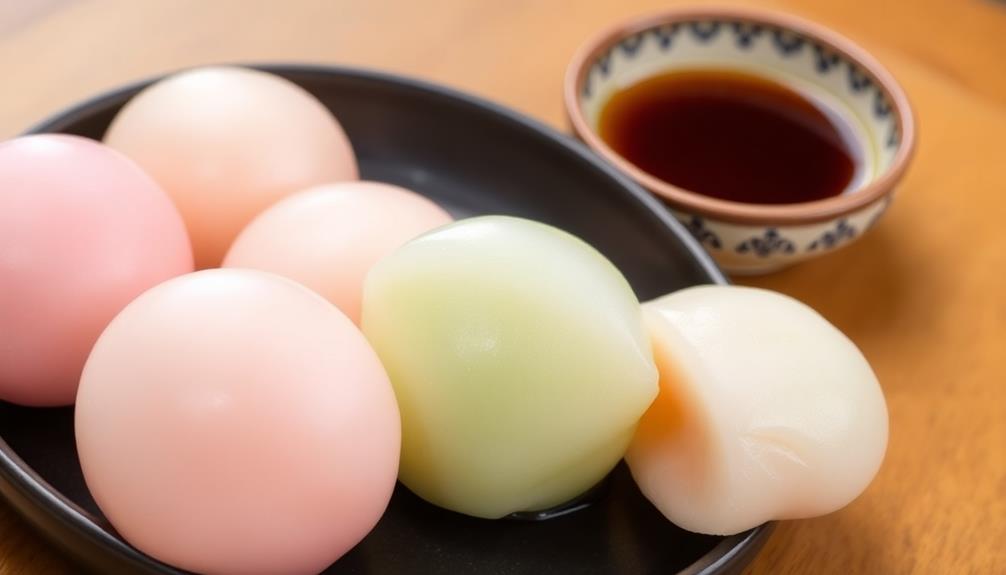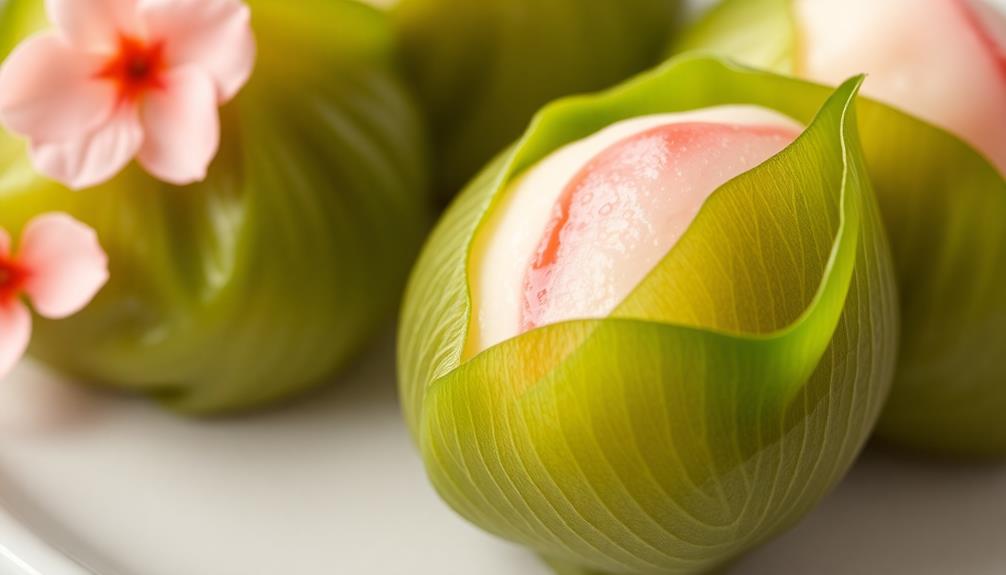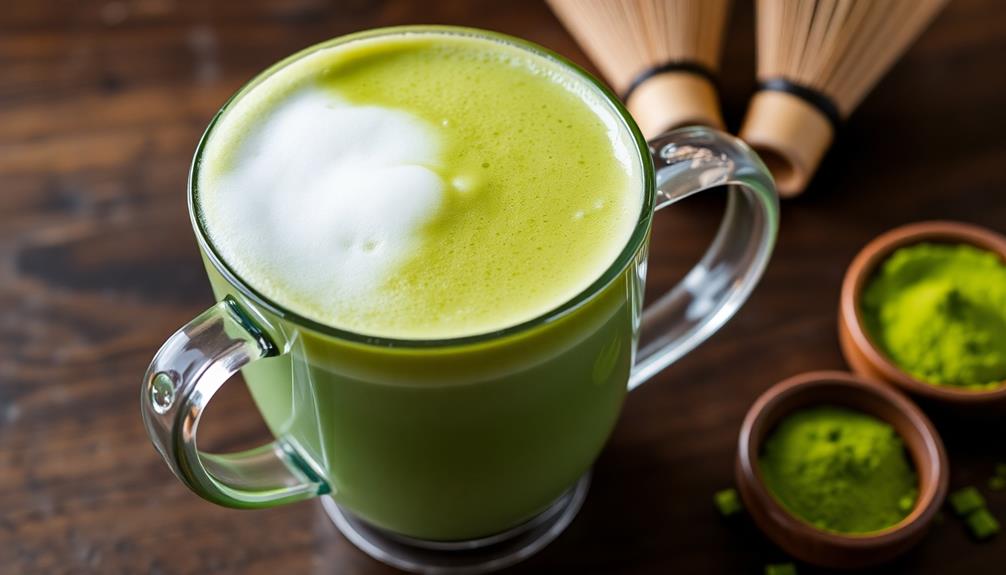To craft the perfect ramen broth, start by sourcing the freshest, high-quality ingredients like pork bones, chicken carcasses, and regional seafood. Proper preparation and cooking techniques deepen the flavor, while regional variations influence the broth’s richness—whether it’s miso, pork-paitan, or soy-based. Using local, seasonal ingredients not only guarantees authenticity but also reflects the culinary heritage of each region. Keep exploring to uncover more secrets from Japan’s ramen masters.
Key Takeaways
- Use high-quality, fresh ingredients like pork bones, chicken, and regional seafood for rich, authentic broth flavors.
- Properly prepare and cook ingredients to maximize flavor extraction and achieve desired broth richness.
- Incorporate regional ingredients and traditional techniques to reflect local culinary heritage and regional variations.
- Sourcing ingredients locally supports freshness, authenticity, and honors regional culinary traditions.
- Tailor broth recipes to regional styles, such as miso for Sapporo or pork-paitan for Hakata, to craft distinctive flavors.

Ever wonder what makes Japanese ramen broth so rich and flavorful? It all begins with the ingredients sourcing—carefully selecting the freshest, highest-quality components is key. Ramen masters understand that every element, from bones to vegetables, influences the final taste. They often source pork bones, chicken carcasses, and fish heads from trusted local suppliers to ensure freshness and flavor depth. The quality of ingredients directly impacts the complexity of the broth, so many chefs develop relationships with regional producers, emphasizing seasonal and regional ingredients that reflect local flavors. This meticulous sourcing means that each bowl of ramen can carry a unique character, influenced by the environment and local culinary traditions. Additionally, ingredient quality can be enhanced through proper preparation and cooking techniques, further enriching the broth’s flavor profile. Moreover, understanding the cooking process and how it transforms ingredients is essential for achieving the desired richness and consistency in the broth.
Regional variations play a significant role in shaping the broth’s profile. For example, in Sapporo, you’ll find a richer, miso-based broth that uses ingredients like locally produced miso and hearty pork. Meanwhile, Hakata-style ramen from Fukuoka is renowned for its milky, pork-paitan broth, achieved by boiling pork bones for extended periods. Tokyo-style ramen often features a soy-based shoyu broth, crafted with lightly roasted ingredients that lend a balanced, savory flavor. Each region’s approach to ingredients sourcing reflects local tastes and available resources, resulting in diverse broth styles that tell a story of their origins. Understanding these regional differences helps you appreciate how ingredient choices and local culinary philosophies shape the broth.
To craft a truly authentic broth, you need to pay close attention to how you source your ingredients and embrace regional nuances. Many ramen chefs prefer to use ingredients that are specific to their locality because they believe it adds authenticity and depth to the flavor. This might mean using locally caught fish for a seafood-based broth or sourcing particular vegetables that grow best in the area. By doing so, they honor regional traditions and ensure their broth embodies a sense of place. This commitment to authentic ingredients sourcing isn’t just about flavor—it’s about capturing the essence of the region and elevating a simple bowl of ramen into a cultural experience.
Frequently Asked Questions
What Are Common Mistakes to Avoid When Making Ramen Broth?
When making ramen broth, avoid common mistakes like ingredient mishaps and poor flavor balancing. Don’t rush the simmering process, or your broth will lack depth. Be careful with ingredients; using too much or too little can throw off the flavor. Also, taste frequently to make sure the seasoning is balanced. Remember, patience and precision are key to creating a rich, flavorful broth that truly enhances your ramen experience.
How Do Regional Variations Influence Broth Recipes in Japan?
Regional variations greatly influence ramen broth recipes across Japan. You’ll notice that different regions use unique regional spices and local ingredients, which give each broth distinct flavors. For example, northern areas may favor richer, miso-based broths, while southern regions prefer lighter, shoyu varieties. By incorporating local ingredients and regional spices, you can create authentic flavors that reflect each area’s culinary identity, making your ramen truly unique.
Can Homemade Broth Be Stored Long-Term Without Losing Flavor?
Your homemade broth is like a precious jewel that needs careful guarding. To store it long-term without losing flavor, you should use proper storage techniques such as airtight containers and freezing in small portions. Rapid cooling before storage helps preserve its essence. By doing so, you lock in its rich taste and aroma, ensuring each sip remains as vibrant as when you first made it, ready to bring warmth and comfort whenever you desire.
What Tools Are Essential for Preparing Authentic Ramen Broth?
To prepare authentic ramen broth, you’ll need traditional cooking utensils like a large stockpot, a fine strainer, and a ladle. These tools help with broth flavor enhancement by ensuring proper simmering and easy skimming. Using quality utensils preserves the integrity of your ingredients, allowing the flavors to develop fully. With these essential tools, you’ll create a rich, flavorful broth that captures the true essence of Japanese ramen.
How Do Vegetarian or Vegan Options Alter Traditional Broth Techniques?
Imagine a vibrant garden blooming with flavors, where plant-based substitutions transform traditional broths. You’ll find that vegan and vegetarian techniques gently infuse the broth with umami enhancement through ingredients like miso, mushrooms, and seaweed. These elements deepen the flavor, creating a rich, satisfying experience. By embracing these plant-based options, you craft a broth that’s both wholesome and complex, satisfying your palate without relying on animal products.
Conclusion
Now that you’ve uncovered the secrets behind Japanese ramen broth, it’s like learning to paint a masterpiece—you start with simple strokes that come together to create something extraordinary. Just like a ramen master patiently simmering for hours, your newfound knowledge will elevate your cooking. Remember, even the smallest tweak can transform your broth into a rich, comforting masterpiece. So go ahead, experiment and craft your own bowl of perfection—your taste buds will thank you.










